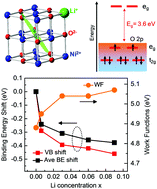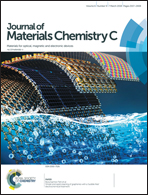Electronic and transport properties of Li-doped NiO epitaxial thin films
Abstract
NiO is a p-type wide bandgap semiconductor of use in various electronic devices ranging from solar cells to transparent transistors. Understanding and improving its optical and transport properties have been of considerable interest. In this work, we have investigated the effect of Li doping on the electronic, optical and transport properties of NiO epitaxial thin films grown by pulsed laser deposition. We show that Li doping significantly increases the p-type conductivity of NiO, but all the films have relatively low room-temperature mobilities (<0.05 cm2 V−1 s−1). The conduction mechanism is better described by small-polaron hoping model in the temperature range of 200 K < T < 330 K, and variable range hopping at T < 200 K. A combination of X-ray photoemission and O K-edge X-ray absorption spectroscopic investigations reveal that the Fermi level gradually shifts toward the valence band maximum (VBM) and a new hole state develops with Li doping. Both the VBM and hole states are composed of primarily Zhang-Rice bound states, which accounts for the small polaron character (low mobility) of hole conduction. Our work provides guidelines for the search for p-type oxide materials and device optimization.



 Please wait while we load your content...
Please wait while we load your content...